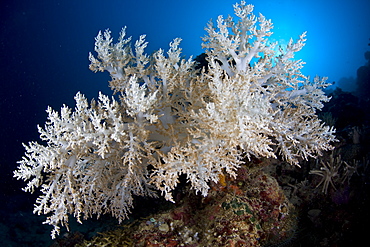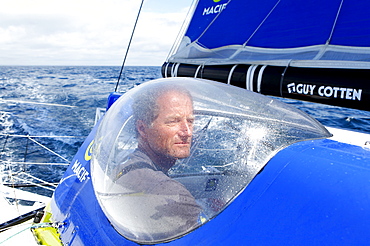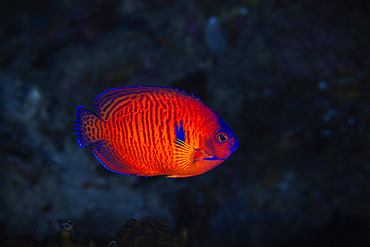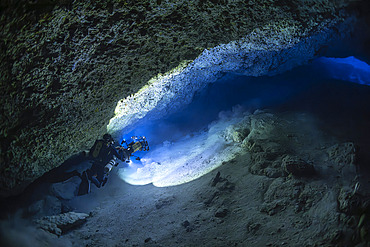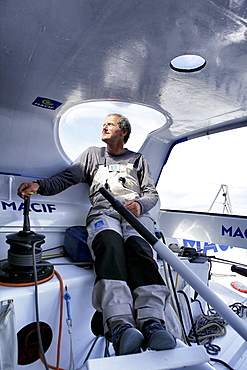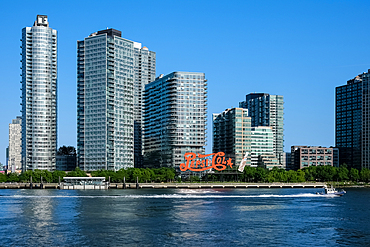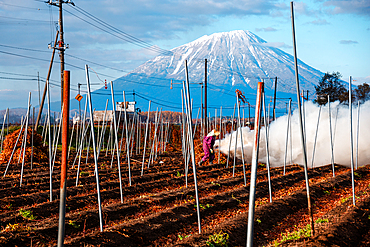Recent searches
Loading...
1243-544 - Aerial drone panoramic view of Parque dos Poetas in Oeiras, Lisbon, Portugal. The park extends over 25 hectares of green areas , embellished with more than 60 statues in honor of 60 poets, with capacity for 30 to 40 thousand visitors and free admission
1383-60 - The Kulamba Traditional Ceremony of the Chewa people takes place every year on the last Saturday in August near Katete. The Chewa who also live in Mozambique and Malawi come to pay homage to their Chief Kalonga Gaia Uni.
1384-60 - Historical Spanish colonial buildings, Plaza de la Independencia, Campeche city, Campeche State, Mexico
764-60 - Mallaa Mallaa Falls, Queensland, Australia, Pacific
581-60 - Tranquil landscape, Nikkaluotta, Kiruna, Arctic Sweden, Sweden, Scandinavia, Europe
727-60 - Local Indian with Llama, Cusco, Peru, South America,
627-60 - Animal skull, rocks and cracked dry earth, Outback, South Australia, Australia, Pacific
744-60 - Detail of the gold sheath of one of the king's daggers showing animals in a hunting scene, from the tomb of the pharaoh Tutankhamun, discovered in the Valley of the Kings, Thebes, Egypt, North Africa, Africa
748-60 - Polar Bear with cubs, (Ursus maritimus), Churchill, Manitoba, Canada
1196-60 - Sadhu doing yoga at hindu temple pashupati nath, nepal
763-60 - Portrait of a young girl in her home in the town of Barigua near Baracoa in eastern Cuba, Cuba
971-60 - Lunge-feeding fin whale (Balaenoptera physalus) showing distended throat grooves, Northeast Atlantic, off Morocco, North Africa, Africa
312-2362 - Traditional beehive house of the Dorze people, made entirely from organic materials, that can last up to 60 years, Chencha mountains, Rift Valley, Ethiopia, Africa
770-60 - Landscape near San Quirico d'Orcia, Tuscany, Italy, Europe
1213-60 - Seljalandsfoss waterfall, South Region, Iceland, Polar Regions
1116-46828 - A calf imitates its mother swimming upside down. The sperm whale (Physeter macrocephalus) is the largest of all the toothed cetaceans. Males can reach 60 feet in length. Photographed in the Indian Ocean off the coast of Sri Lanka, Sri Lanka
794-60 - Interior of circular concourse and roof of the spectacular new Shanghai South Railway Station in 2007, Shanghai, China, Asia
795-60 - Woman sitting in hammock on beach, Maldives, Indian Ocean, Asia
802-60 - A local boy grinds millet by hand using a huge mortar and pestle, Tsaranoro Velley, Andringitra National Park, near the provincial city of Fianarantsoa, southern Madagsacar, Africa
822-60 - Mannequin of famous Japanese TV personality selling his food products called Tat-chan Zuke at gift shop, Japan, Asia
1104-60 - Museum of Islamic Art with West Bay skyscrapers in background, Doha, Qatar, Middle East
824-60 - Two sea lions off Floreana Island, Galapagos, Ecuador, South America
826-60 - An auto rickshaw drives along the Rajpath, in front of the Rashtrapati Bhavan (President's Palace), on a hazy day in New Delhi, India, Asia
829-93 - Mausoleum and Saadian tombs in Marrakech Morocco where over 60 members of the Saadi dynasty are buried. The dynasty ruled from the mid 16th to mid 17th century. The tombs were sealed and only re-discovered in 1917
1216-60 - Rattray Lighthouse, Aberdeenshire, Scotland, United Kingdom, Europe
1212-432 - 60-foot long Reclining Buddha at Shinbinthalyaung Temple, Bagan (Pagan), Myanmar (Burma), Asia
841-60 - Church of Masdache village, Lanzarote, Canary Islands, Spain, Europe
1353-60 - Fruit Market Stall, Panjim Market, Panjim (Panaji), Goa, India, Asia
1111-60 - Woman feeding pigeons with corn at Amber Fort in Rajasthan, India, Asia
809-5046 - Giraffe in the park of Koure, 60 km east of Niamey, one of the last giraffes in West Africa after the drought of the seventies, they remain under the threat of deforestation, Niger, West Africa, Africa
920-60 - Freckled driftfish (Psenes cyanophrys) next to drifting net in open ocean, Kailua-Kona, Big Island, Hawaii, United States of America, Pacific
970-60 - Wolf fish (Anarhichas lupus), head in profile with mouth open, St Abbs, Scotland, UK North Sea
975-60 - An IDP camp (internally displaced people) in Amuru district of Northern Uganda has been created to accommodate the mass of Ugandan refugees fleeing the LRA (Lords Resistance Army) who are fighting the Ugandan government and its people. Here you can see some of the many children, lined up by their school building. Amuru, Uganda, East Africa
1067-60 - Bleached soft coral, Sinularia sp. This colony has lost its symbiotic zooxanthellae and turned white due to high water temperatures. Buyat Bay, North Sulawesi, Indonesia, Pacific Ocean.
1194-2650 - Burundi nduwamahoro, active non,violence peace building project, supported by sciaf. In the home of grandmother ntezahorigwa pelagie, 60. The family preparing food: taking beans from their pods, cleaning peas and peeling cassava, their staple diet.
1194-60 - BOLIVIA Plant for processing medicinal and aromatic herbs, Chizchipani, Caranavi. The project of FUNDAWI. Cleaning and drying Salvia, a medicinal plant used for coughs and stomach problems
857-86091 - The IMOCA Open 60 PRB crewed by Vincent Riou and Jean Le Cam racing and winning the around the Isle of Wight Artemis Challenge, Cowes, England.
857-86095 - Onboard the IMOCA Open 60 Macif crewed by Francois Gabart and Michel Desjoyeaux during a training session before the Transat Jacques Vabre in the English Channel from Plymouth to Port la Foret after she won on her class the Rolex Fastnet Race.
857-86100 - Onboard the IMOCA Open 60 Macif crewed by Francois Gabart and Michel Desjoyeaux during a training session before the Transat Jacques Vabre in the English Channel from Plymouth to Port la Foret after she won on her class the Rolex Fastnet Race.
857-86104 - Onboard the IMOCA Open 60 Macif crewed by Francois Gabart and Michel Desjoyeaux during a training session before the Transat Jacques Vabre in the English Channel from Plymouth to Port la Foret after she won on her class the Rolex Fastnet Race.
857-86103 - Onboard the IMOCA Open 60 Macif crewed by Francois Gabart and Michel Desjoyeaux during a training session before the Transat Jacques Vabre in the English Channel from Plymouth to Port la Foret after she won on her class the Rolex Fastnet Race.
826-648 - The 60 metre tall bell tower of the Cathedral of St. Nicholas the Pilgrim (San Nicola Pellegrino) in Trani, Apulia, Italy, Europe
1243-60 - The ancient Roman amphitheatre in Caesarea, Israel, Middle East
1275-60 - Morning glow in winter landscape of Vermilion Lakes, Banff National Park, UNESCO World Heritage Site, Rocky Mountains, Alberta, Canada, North America
1283-60 - The old town of Hvar Town at dawn, Hvar, Croatia, Europe
1231-60 - Visitors in pods on the London Eye at sunset. London, England, UK, Europe.
1382-60 - aerial view from Radisson Blu hotel,Riga,Latvia,Baltic region,Northern Europe
1382-109 - mural painting by Os Gemeos, two Brazilian twin brothers, graffiti and street artists, Pylimo Street 60, Vilnius, Lithuania, Europe
1382-110 - mural painting by Os Gemeos, two Brazilian twin brothers, graffiti and street artists, Pylimo Street 60, Vilnius, Lithuania, Europe
857-86096 - Onboard the IMOCA Open 60 Macif crewed by Francois Gabart and Michel Desjoyeaux during a training session before the Transat Jacques Vabre in the English Channel from Plymouth to Port la Foret after she won on her class the Rolex Fastnet Race.
1267-60 - The Olgas (Kata Tjuta) at sunrise, Uluru-Kata Tjuta National Park, UNESCO World Heritage Site, Northern Territory, Australia, Pacific
1341-60 - Taj Mahal, UNESCO World Heritage Site, Agra, Uttar Pradesh, India, Asia
1167-60 - 1982 Falklands War Memorial, Stanley, East Falkland, Falkland Islands, South America
799-60 - Dartmoor ponies and foals, Dartmoor National Park, Devon, England, United Kingdom, Europe
1031-2 - Winsford, a small village in Cheshire with a mine that supplies nearly 60% of the country's grit salt..
857-86108 - Onboard the IMOCA Open 60 Macif crewed by Francois Gabart and Michel Desjoyeaux during a training session before the Transat Jacques Vabre in the English Channel from Plymouth to Port la Foret after she won on her class the Rolex Fastnet Race.
1376-60 - UK Weather: Sleet and snow showers from Furness Abbey, Barrow In Furness, Cumbria, Furness Peninsula, UK.
860-292213 - Two-spined angelfish (Centropyge bispinosa) at a depth of 60 metres, Mayotte
860-292443 - Tek rebreather diver at a depth of 70 meters with a DPV specially equipped with 60,000 lumen lighting and 12 Gopro to carry out a 3D survey of a karstic cave submerged for over 14,000 years, Passe Bateau Sud, Mayotte Lagoon
809-5047 - Giraffe in the park of Koure, 60 km east of Niamey, one of the last giraffes in West Africa after the drought of the seventies, they remain under the threat of deforestation, Niger, West Africa, Africa
857-86105 - Onboard the IMOCA Open 60 Macif crewed by Francois Gabart and Michel Desjoyeaux during a training session before the Transat Jacques Vabre in the English Channel from Plymouth to Port la Foret after she won on her class the Rolex Fastnet Race.
1304-60 - African Penguin, Boulders Beach in Cape Town, South Africa, Africa
1350-722 - Making chai. Volunteers cooking for the pilgrims who visit the Golden Temple, Each day they serve free food for 60,000 - 80,000 pilgrims, Golden temple, Amritsar, Punjab, India
860-292444 - Speleologist diver taking photographs in a karstic cave at Passe Bateau Sud at a depth of 60 metres, Mayotte
1369-60 - Aerial view by airplane of incredible turquoise volcanic Skafta lake in Icelandic Highlands, Iceland, Polar Regions
857-86099 - Onboard the IMOCA Open 60 Macif crewed by Francois Gabart and Michel Desjoyeaux during a training session before the Transat Jacques Vabre in the English Channel from Plymouth to Port la Foret after she won on her class the Rolex Fastnet Race.
857-86109 - Onboard the IMOCA Open 60 Macif crewed by Francois Gabart and Michel Desjoyeaux during a training session before the Transat Jacques Vabre in the English Channel from Plymouth to Port la Foret after she won on her class the Rolex Fastnet Race.
860-292441 - Potholing diver in a karstic cave at Passe Bateau Sud, 60 metres deep in Mayotte's lagoon.
860-292442 - Cave diver in a karst underwater cave at a depth of 60 metres for the Gumbo La Baharini 2 expedition, Passe Bateau Sud at a depth of 60 metres, Mayotte
770-742 - Ring of Brodgar stone circle dating from between 2500 and 2000 BC, 27 stones of 60 still standing, UNESCO World Heritage Site, Mainland, Orkney Islands, Scotland, United Kingdom, Europe
857-86107 - Onboard the IMOCA Open 60 Macif crewed by Francois Gabart and Michel Desjoyeaux during a training session before the Transat Jacques Vabre in the English Channel from Plymouth to Port la Foret after she won on her class the Rolex Fastnet Race.
1373-60 - The Pepsi-Cola sign, built in 1940, a neon sign at Gantry Plaza State Park in the Long Island City neighborhood of Queens, visible fromManhattan the East East River, New York City, United States of America, North America
1176-60 - Pelourinho in city centre with Our Lady of the Roasary of Black People (Nossa Senhora do Rosario dos Pretos) at dusk, UNESCO World Heritage Site, Salvador de Bahhia, Bahia, Brazil, South America
1284-60 - Cypress trees and fields in the afternoon sun at Agriturismo Terrapille (Gladiator Villa) near Pienza in Tuscany, Italy, Europe
860-291625 - Grey reef shark (Carcharhinus amblyrhynchos) in a cave at a depth of 60 metres. Mayotte
1235-60 - Salt pans on the island of Gozo, Malta, Mediterranean, Europe
1372-60 - Farmer burning straw on a field, with snowy volcano and smoke, Yotei-zan summit, Hokkaido, Japan, Asia
391-7121 - The Old Faithful Geyser at Calistoga, erupts 60 ft high every 30 minutes, with a pressure of 1000 lbs per square foot, Napa Valley, California, United States of America, North America
770-614 - Ring of Brodgar, stone circle dating from between 2500 and 2000 BC, 27 out of 60 stones still standing, UNESCO World Heritage Site, Mainland, Orkney islands, Scotland, United Kingdom, Europe
812-60 - Woman on bicycle in rain, Vietnam, Indochina, Southeast Asia, Asia
940-60 - Red grasshawk dragonfly (Neurothemis fluctuans) male at rest, Kuala Lumpur Butterfly Park, Kuala Lumpur, Malaysia, Southeast Asia, Asia
921-60 - Walrus (Odobenus rosmarus). Longyearbyen, Far Northern Ice Sheets, Svalbard, Norway
857-86097 - Onboard the IMOCA Open 60 Macif crewed by Francois Gabart and Michel Desjoyeaux during a training session before the Transat Jacques Vabre in the English Channel from Plymouth to Port la Foret after she won on her class the Rolex Fastnet Race.
839-60 - Terracotta warrior figures in the Tomb of Emperor Qinshihuang, Xi'an, Shaanxi Province, China
979-60 - Adult Hawaiian Spinner Dolphin (Stenella longirostris) head-slapping in the AuAu Channel between Maui and Lanai, Hawaii, USA
979-7139 - Chinstrap penguin (Pygoscelis antarctica) chick head detail at colony on Useful Island near the Antarctic Peninsula. There are an estimated 2 million breeding pairs of chinstrap penguins in the Antarctic peninsula region alone, perhaps as many as 7.5 million breeding pairs in all of Antarctica. Their name derives from the narrow black band under their heads which makes it appear as if they are wearing black helmets, making them one of the most easily identified types of penguin. Other names for them are "Ringed Penguins", "Bearded Penguins", and "Stonecracker Penguins" due to their harsh call. They grow to 68 cm (27 in). The average adult weight of a Chinstrap Penguin is 4.5 kg (10 lbs). Weight can range from 3 to 6 kg (6.6-13.2 lbs), with males being slightly larger and weight varying based on where the penguin is in the breeding cycle. Their diet consists of krill, shrimp, and fish. On land they build circular nests from stones, and lay two eggs, which are incubated by both the male and the female for shifts of five to ten days. They can also breed on icebergs, though they prefer non-icy conditions. The chicks hatch after about 35 days, and have fluffy gray backs and white fronts. The chicks stay in the nest for 20?30 days before they go to join a creche. At around 50?60 days old, they moult, gaining their adult plumage and go to sea. The Chinstrap Penguin was first described by German naturalist Forster in 1781. Its specific epithet was often seen as antarctica, however a 2002 review determined the genus Pygoscelis was masculine, and hence the correct binomial name is Pygoscelis antarcticus.
1350-727 - Volunteers cooking for the pilgrims who visit the Golden Temple, Each day they serve free food for 60,000 - 80,000 pilgrims, Golden temple, Amritsar, Punjab, India
1163-60 - A man fishing on Phewa Tal (Phewa Lake), Pokhara, Nepal, Asia
844-60 - Church and mountains, Cadenabbia, Lake Como, Lombardy, Italy, Europe
1031-5 - Winsford, a small village in Cheshire with a mine that supplies nearly 60% of the country's grit salt..
1228-60 - Loch Alvie, Strathspey and Badenoch, Cairngorms, Highland, Scotland, United Kingdom, Europe
1248-60 - Panned shot of mototaxi in Iquitos, Peru, South America
1337-5 - A tour boat observes lava pouring into the sea from 60 feet above as steam plumes billow up, Hawaii Volcanoes National Park, UNESCO World Heritage Site, Hawaii, United States of America, Pacific
1272-60 - Thames Barrier and Canary Wharf at dusk, London, England, United Kingdom, Europe
1314-60 - Happy tourist woman in bikini holding hand of her partner, Wild Anse Kerlan, Praslin, Seychelles, Indian Ocean, Africa
1001-60 - Pyrausta purpuralis, Crambidae, Bulgaria, Europe
848-60 - Santa Cruz La Laguna, Lake Atitlan, Western Highlands, Guatemala, Central America
917-60 - Indo-Pacific Bottlenose Dolphin (Tursiops Aduncus). Azores, North Atlantic
1292-60 - Marble quarries, Carrara, Tuscany, Italy, Europe

































